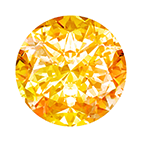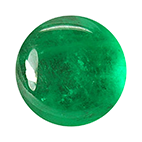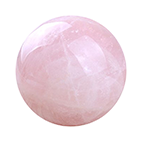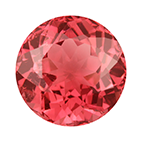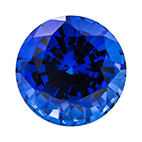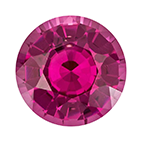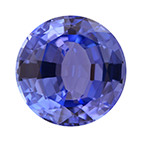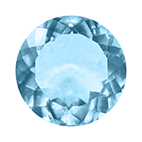Precious Stones Guide
AMETHYST
February Birthstone
The ancient Greeks and Romans believed Amethyst would ward off the intoxicating powers of Bacchus, and keep the wearer clear headed and quick-witted. For centuries, Amethyst has been associated with many myths and legends as well as religions in numerous cultures.
Not only is it the beautiful color that makes this gem so popular but it is also widely available in difference shapes and sizes which makes it more affordable. Amethyst complements both warm and cool colors so it looks fabulous set in both yellow and white metals. This unique ability means it enhances almost every color in your wardrobe.
AQUAMARINE
March Birthstone
The name Aquamarine speaks for itself, meaning seawater. Aquamarine immediately brings to mind its stunning pastel sky blue or the bright color of the sea.
For centuries, this timeless gemstone has been a symbol of youth, hope, health and fidelity. Since this gemstone is the color of water and the sky, it is said to embody eternal life. It was long thought that Aquamarine has a soothing influence on married couples, making it a good anniversary gift.
Aquamarines are found in a range of blues; from a pale pastel to a greenish-blue to a deep color. Darker shades of blue are increasingly rare and in turn, make the value increase. Aquamarine is frequently a pastel gemstone but the color can be more intense in larger gemstones, smaller aquamarines tend to be less vivid.
CITRINE
This bright shining gem has said to be a gift from the sun. The name Citrine, which is French for “lemon”, fits well with its color range of juicy lemon yellow to a bright orangey brown. Most people choose a Citrine based on their personal preference, but some of the most sought-after Citrine gemstones have a clear, radiant yellowish to brownish red color.
In ancient times, Citrine was carried as a protection against snake venom and evil thoughts. Today, Citrine is known as the merchant’s stone and is associated with success and prosperity.
Citrine is one of the most popular and affordable gemstones. It is relatively plentiful and available in a wide range of sizes and shapes, including very large sizes. These reasons make it a great gem for that big, bold, statement piece.
DIAMOND
April Birthstone
Since ancient times, diamonds have been admired objects of desire. Formed one hundred miles beneath the Earth’s surface over a billion years ago, diamonds are the hardest gem of all. Diamonds have a long history of folklore; some of which say diamonds were created when bolts of lightning struck rocks, and others said the gem possessed healing powers. For centuries, diamonds have been adorned by women and men and regarded as the ultimate gift and a symbol of eternal love.
Today, diamonds are still admired all around the world. Until the middle of the twentieth century, there was no standard by which diamonds could be evaluated. GIA created the first, and now globally accepted standard for describing diamonds: Color, Clarity, Cut, and Carat Weight. Today, the 4C’s of Diamond Quality are the universal method for assessing the quality of any diamond, anywhere in the world.
Finding the perfect diamond is not something to take lightly. Visit our Diamond Education section for tips and information on how to find the diamond that is right for you.
EMERALD
May Birthstone
Green is the color of Spring and has long symbolized love and rebirth. As the gem of Venus, it was also considered to aid in fertility.
Cleopatra, Egypt’s tempestuous female monarch was as famous for wearing Emeralds in her time as Liz Taylor is for wearing diamonds in our time. Ancient Egyptian mummies were often buried with an Emerald carved with the symbol of verdure– flourishing greenness–on their necks to symbolize eternal youth.
The deeper and more vivid the color of green, the more valuable the gemstone. The most valuable and beautiful Emeralds exhibit an intense bluish hue in addition to their basic bold green color. Emeralds, among the rarest of gems, are almost always found with birthmarks, known as inclusions. Some inclusions are expected and do not detract from the value of the stone as much as with other gemstones.
GARNET
January Birthstone
This gem is available in a rainbow of colors, from the deep red Bohemian Garnet to the vibrant greens of the Russian Demantoid and African Tsavorite. We also see it appearing in the oranges and browns of Spessartite and Hessonite from Namibia and Sri Lanka and the subtle pinks and purples of Rhododendron.
Legend says Garnets light up the night and protect their owners from nightmares. Garnets have long been carried by travelers to protect against accidents far from home. Garnet is the birthstone for January but with its stunning variety of colors and its mystical powers it has been given as a gift for all occasions for centuries.
JADE
Jade has been treasured in China as the royal gemstone since at least 2950 BC. Thought to preserve the body after death, Jade can be found in emperors’ tombs from thousands of years ago. To this day, many people believe that jade will protect them from harm.
Jade is known for it’s vivid green and shimmery, smooth shapes but it also comes in lavender, pink, yellow, and white. The most common shape is the flat, donut-shaped disc called a pi, which is commonly worn as a necklace.
Wearing a stunning piece of Jade jewelry is sure to make anyone ‘green’ with envy.
MOONSTONE
June Birthstone
Ancient Romans believed that this shimmering rock was formed from frozen moonlight, giving it the name Moonstone. In colors ranging from colorless to gray, brown, yellow, green, or pink and clarity that goes from transparent to translucent. The best Moonstone has a blue sheen, perfect clarity, and a colorless body color. Found in India and Madagascar, rainbow Moonstone has a variety of colors, from pink to yellow, to peach, purple, and blue.
Fine Moonstone is quite rare and becoming rarer. We’ve searched to the ends of the earth to find some of the world’s most stunning Moonstone.
OPAL
October Birthstone
In ancient times, the Opal was known as the Queen of Gems because it encompassed the colors of all other gems. Each Opal is truly one-of-a-kind; as unique as our fingerprints. Some prefer the calming flashes of blues and greens; others love the bright reds and yellows. With its rainbow of colors, as you turn and move the Opal the color plays and shifts, giving you a gem that can be worn with a plethora of ensembles.
Australia’s Lightning Ridge is known for its rare and stunning black Opals. The ideal Opal is one that displays broad patterns covering the surface, with all the colors of the rainbow, including red. Since Opals are the most individual gemstone with its range of colors be sure to choose one that showcases your color preference and pattern.
Rose Quartz
Rose quartz has been used in love rituals and ceremonies for centuries, and remains the stone of the hopeless romantic. A member of the quartz family, this crystal is made up of silicon dioxide. It’s sweet, soft pink hue is the result of both the many, tiny inclusions of pink fibers, known as dididumortierite, within the glassy stone that keep it from being totally transparent, and irradiation. The most common sources for rose quartz are in Brazil, Madagascar, India and South Africa.
The ancient civilizations of Rome and Assyria were the first to use this crystal as a bead in rose quartz jewelry. Its use in talismans, however, carried more symbolic weight. To early Egyptian, Greek and Roman civilizations, rose quartz meaning within a talisman was that of ownership. Rose quartz talisman were used to signify that a deal had been reached. The Egyptians also believe that the stone could prevent wrinkles and the effects of aging. Greek and Roman myths were the first to attach the symbol of love to the rose quartz meaning. According to the myth, Cupid, the Roman god of desire, or Eros, the Greek god of love, bestowed the gift of love to humans in the form of a rose quartz. Another rose quartz myth tells of the stone receiving its color from the blood Aphrodite spilt in trying to save her dying lover Adonis. Both of the lovers bled over the stone, and its lasting stain is meant to represent eternal love.
RUBY
July Birthstone
The Ruby represents love, passion, courage and emotion. For centuries this gem has been considered the king of all gems. It was believed that wearing a fine red Ruby bestowed good fortune on its owner. Rubies have been the prized possession of emperors and kings throughout the ages. To this day the Ruby is the most valued gemstone.
The color of a Ruby is the most important feature of the gemstone. Rubies are available in a range of red hues from purplish and bluish red to orange-red. The brightest and most valuable color of Ruby is often “a Burmese Ruby” – an indication that it is a rich, passionate, hot, full red color with a slight blue hue. This color is often referred to as “pigeon blood” red, a Ruby color only associated with the Mogok Valley mines in Myanmar. The color Pigeon Blood Ruby red, is not associated with the color of a pigeon’s blood but rather the color of a white pigeon’s eye.
SAPPHIRE
September Birthstone
When hearing the word Sapphire many people immediately envision a stunning violet-blue gemstone because the word “Sapphire” is Greek for blue. For centuries, the Sapphire has been referred to as the ultimate blue gemstone. Since Ancient times the Blue Sapphire represented a promise of honesty, loyalty, purity and trust. To keep with this tradition Sapphires are one of the most popular engagement gemstones today.
Sapphire is found in many parts of the world, but the most prized Sapphires are from Myanmar (Burma), Kashmir and Sri Lanka. Sapphires with highly saturated violet-blue color and “velvety” or “sleepy” transparency are more rare. The purer the blue of the Sapphire, the greater the price. However, many people find that the darker hues of Sapphire can be just as appealing.
Sapphires are not only blue, they come in almost every color of the rainbow: pink, yellow, orange, peach, and violet colors. The most sought-after color fancy Sapphire is the rare and beautiful Padparadscha: a pink-orange corundum with a distinctive salmon color reminiscent of a tropical sunset. These ultra-rare, ultra-expensive stones are among the most coveted gems in the world.
SPINEL
August Birthstone
Centuries ago, Sanskrit writings referred to Spinel as the daughter of ruby. The bright red color of Spinel is so closely related to the Ruby the two of them are often confused with one another. Spinels are actually more rare than ruby but, unlike ruby, they sometimes can be found in very large sizes.
In addition to beautiful rich reds, Spinel can be found in shades of orange and beautiful pastel pink, as well as purple. Of particular interest is a vivid, hot pink with a tinge of orange that is mined in Burma, which is one of the most spectacular gemstone colors and unlike any other gem. Spinel also comes in beautiful blues, but these are extremely rare.
Believed to protect the owner from harm, to reconcile differences, and to soothe away sadness. However, its true appeal is the range of rich, brilliant colors and affordability.
TANZANITE
December Birthstone
Tanzanite is a one-of-a-kind gemstone unlike any other and can only be found in one place on Earth: the foothills of Mount Kilimanjaro. This gem possesses an exotic velvety blue with a rich overtone of purple, a color unlike any other.
One of today’s most popular blue gemstones, Tanzanite comes in a variety of shapes, sizes and striking assortments of blue tones. Rarely pure blue, Tanzanite almost always displays its signature overtones of purple. In smaller sizes, Tanzanite usually contains lighter tones and the lavender color is more common. While in larger sizes, Tanzanite typically displays a deeper, richer and beautiful blue.
TOPAZ
November Birthstone
In shades of yellow, brown, honey, green, blue, red, pink and sometimes no color at all, Topaz has a mass appeal. Topaz is often found in an amber gold, yellow, or a blushing pink orange but a pale pink or a sherry red Topaz is very exceptional. The most prized color of Topaz is called Imperial Topaz and features a magnificent orange with pink undertones. Blue, once the most rare color of Topaz, is the most common today due to man’s ability to enhance its color; Topaz with a naturally blue color is very rare.
The ancient Egyptians and Romans associated this golden gem with the sun god giving it the power to protect and heal. Legend says that topaz dispels enchantment. With its worldwide mass appeal throughout the centuries, once you find that perfect Topaz you’ll soon be under its spell.
TOURMALINE
October Birthstone
Available in a spectrum of colors and color combinations, Tourmaline lives up to its name, which means “mixed stone”. With a rainbow of colors, Tourmaline can easily enhance any jewelry collection. Cranberry red, hot magenta, bubblegum pink, peach and orange, canary yellow, mint, grass and forest green, ocean blue, violet: Tourmaline is all of these and more.
Tourmaline is also known for displaying several colors in one gemstone. These bi-color or tri-color gems are formed in many combinations and are highly prized. One multi-color variety is known as Watermelon Tourmaline and features green, pink, and white color bands. To resemble its namesake, the gemstone is cut into thin slices having a pink center, white ring, and green edge.
With Tourmaline available in so many colors, you’re sure to find one in your favorite color.



